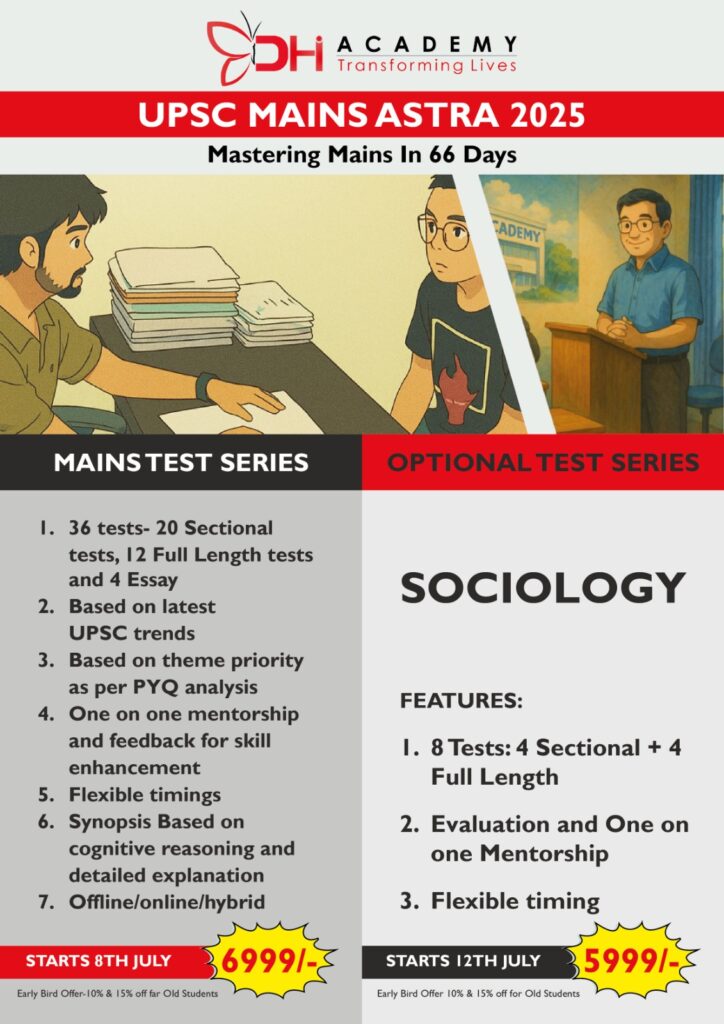Sociology is more than an optional subject; it’s the very grammar of social consciousness required in a civil servant. It provides the tools to understand social structure, change, inequality, identity, and reform in the Indian context.

Trend: Increased focus on current sociological relevance
Action: Apply thinkers to real-life issues (e.g., caste census, digital strikes)
Trend: More application-based & thinker-linked questions
Action: Blend theory with current issues (e.g., Marx + Gig economy)
Trend: Demand for precision, structure, brevity
Action: Use clear headings, flowcharts, diagrams
Trend: Rising GS-Sociology-Essay overlap
Action: Develop interdisciplinary answers
Key Areas & Actions
Use a “Sociology + Governance” framework for Paper II answers.
UPSC-standard content for Mains and concept-rich solutions for Prelims
Dedicated doubt resolution, mentor access, and hybrid learning support (Online + Offline)
Area | Strategy |
Short Notes | 150+ definitions with examples |
Test Practice | Timed tests every 10 days + peer review |
PYQ Analysis | Track repeated themes with new framing |
GS/Essay Integration | Infuse sociology in essays like “Tech & Society” |
Resource | Purpose |
Haralambos & Holborn | Conceptual base |
IGNOU + NIOS Notes | Structured reinforcement |
Yogendra Singh, A.R. Desai | Indian sociological perspectives |
The Hindu, Indian Express | Weekly example updates |
EPW, Yojana | Scholarly integration |
